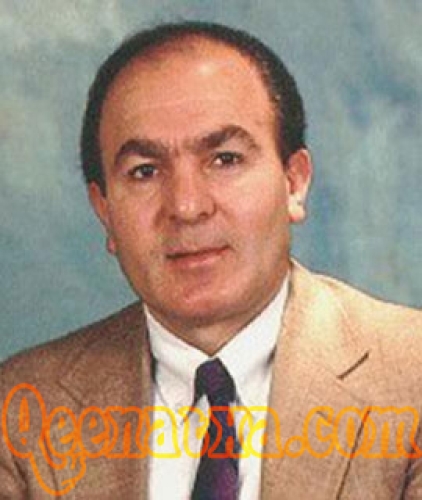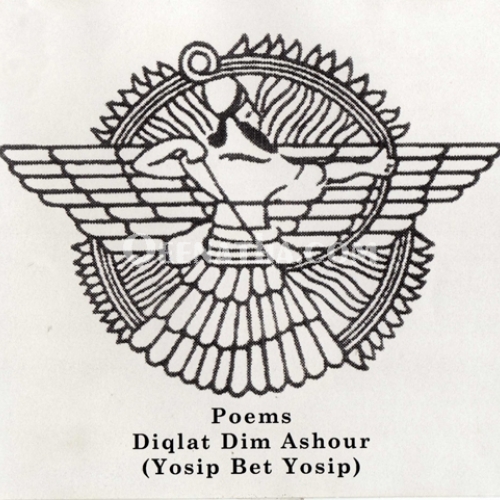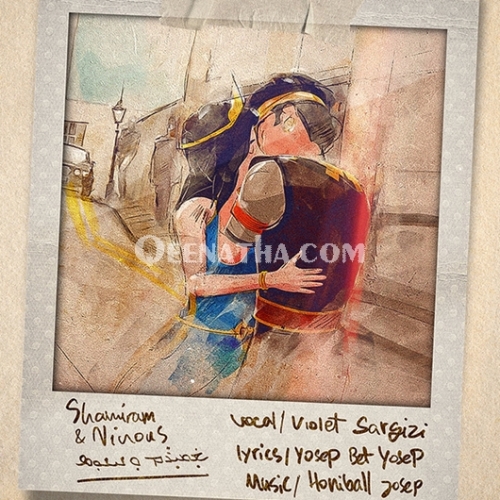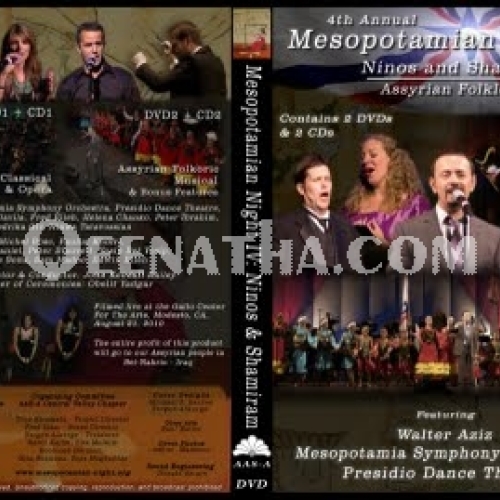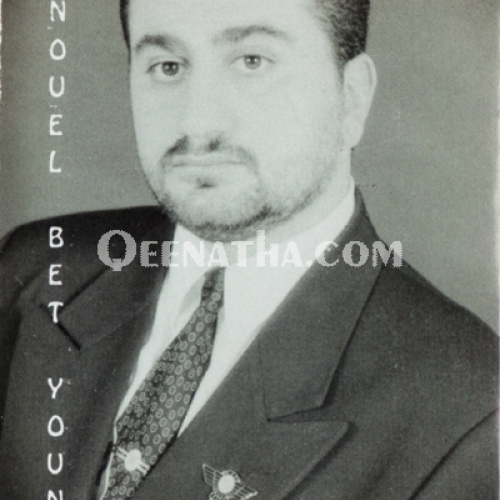Yousip Bet Yousip
Details
- Artist Type
- Poet
- Biography
-
Yosip Bet Yosip was born in 1942 to Rabi Korush Bet Yosip and Anna Khoshaba Bet Yosip in the village of Zumalan, a suburb of Urmieh, Iran.
He spent his youth on the green foothills of the Zagros mountains overlooking his birth place. Early in his youth Yosip learned about the Assyrian culture through listening to Assyrian folk songs, poetry, and story telling conducted by the local elders. This is when his love for the Assyrian culture and heritage was originated.
Yosip, a boy of only 11 years of age noticed that some of the most beautiful songs with profound lyrics were sung in Turkish. Why? He began to question his elders and soon this expedition lead him to uncover that these pieces were created by the Assyrian and Armenian Christians, a minority in the midst of the Iranian Azarbaijani Turks. This, farther enlightened Yosip about the atrocities committed against this Christian minority by the neighboring Moslems. He began to see the underlying philosophy embedded in these songs as an attempt to civilize the Turks. The crafters of these folk pieces, known as aa-shi-ghs were attempting to enlighten their non-Christian neighbors about humanity, love, friendship, and morality.
In 1955, at the age thirteen he recited his father's poetry in the Assyrian organization known as 'Dasta d'Chalish' in the city of Urmieh. The encouragements he received from the other participants inspired him to further pursue Assyrian poetry and cultural growth.
When his family moved to Teheran in 1957, Yosip joined 'Shooshata Umtanaia, a well-known Assyrian youth organization which helped in promoting Assyrian culture by honoring known Assyrian historical events such as the Assyrian New Year and Assyrian Mother's Day. Yosip assisted 'Shooshata Umtanaia' in assembling the first and largest library of Assyrian books ever collected in the modern Assyrian history.
In 1960 Yosip joined the Ninveh Choir group conducted by maestro Nebu Issabey in Teheran, Iran where the group performed numerous concerts in Teheran and Abadan. His membership in 'Shooshata Umtanaia' and later his presidency of the same organization paved his way to a membership in the 'Assyrian Youth Cultural Society'.
In 1968, Yosip, a selected member of the 'Shooshata Umtanaia', was introduced to the political aspects of the Assyrian history and witnessed the birth of an international political organization to oversee the well- being of his beloved Assyrian nation, the 'Assyrian Universal Alliance (AUA)'. Yosip continues to be an outstanding member of the AUA through its many trials and tribulations.
It was 1973, a year after Yosip's arrival to Chicago, Illinois, USA when he met Maestro Issabey who had just arrived from Germany where Maestro Issabey had studied music. Here again Yosip spearheaded the task of reestablishing the Ninveh Choir that performed concerts in the Assyrian community throughout Chicago till 1979. During this time, Yosip was also very active in writing lyrics for many of Maestro Issabey's compositions.
The Assyrian Universal Alliance (AUA) had requested of Assyrian composers the writing of an Assyrian National Anthem. Maestro Issabey was one of many who had contributed to this project with one of his compositions that included the lyrics of Yosip Bet Yosip. This National Anthem was selected and ordained by AUA and the Assyrian American National Federation (AANF) and spread its use.
In 1979, at the same time as Yosip moved from Chicago to Turlock, California, hundreds of Assyrian families had just arrived from Iran after surviving the Iranian Revolution. Yosip extended his helping hands to these Assyrians who were new to the country and needed assistance in preparing and completing the required forms for residence and work permits. Yosip provided this service voluntarily and at no charge, out of the kindness of his heart and his deep love and conviction for his Assyrian people. This he did, when he saw that other Assyrians were providing these service while acquiring a substantial fee for the completion of these services.
Helping these young Assyrians make their stay in Turlock, California, these young Assyrians felt welcomed at Yosip's home where they began meeting on regular basis to socialize and learn from each other's life's experiences and problems. Yosip saw an ample opportunity to help keep these young Assyrians remain in the Assyrian community and maintain Assyrian traditions. This lead him to form the 'Ugarait Choir' where they would rehearse in his home under the direction of the late famed pianist Victor Khodabakhsh and the assistance of Fred Faramarzpour , Nancy Isaac and Yoisps' sister Alice. The 'Ugarait Choir' performed for the next three years in many places in California such as De Anza College in Cupertino, University of Stanislaus Auditorium, Modesto Jr. College Auditorium and Northridge College in Los Angeles.
At this same period Yosip was an active member of the Assyrian American Civic Club (AACC) of Turlock and was responsible for running the operation of the AACC's television program for a period of four years till 1984.
Yosip moved to San Jose in 1984 and became an active member of the Assyrian American Association of San Jose (AAASJ) and was instrumental in helping organize exhibitions of Rabi Hanibal Alkhas' artwork while continuing his active membership in AUA.
In 1986 when a majority of the 'Ugarait Choir' members from Turlock and 'Nineveh Choir' members from Chicago were residing in San Jose, Yosip saw an optimum opportunity in helping Maestro Issabey, then residing in San Jose, in reestablishing the 'Nineveh Choir' once again where he continues to participate in its concerts.
On Monday, June 16 1997 Yosip Bet Yosip and Ninos Ahu, the famous Assyrian Poet enchanted a group of over 50 Assyrians in an evening of poetry held at the Assyrian American Association of San Jose. This was a very memorable event, taking place 25 years after their first poetry sighting in Chicago. Mr. Ninos Ahu had been visiting the United States from his home in Syria and was on his way back home to Syria the following morning.
Yosip Bet Yosip was born in 1942 to Rabi Korush Bet Yosip and Anna Khoshaba Bet Yosip in the village of Zumalan, a suburb of Urmieh, Iran.
He spent his youth on the green foothills of the Zagros mountains overlooking his birth place. Early in his youth Yosip learned about the Assyrian culture through listening to Assyrian folk songs, poetry, and story telling conducted by the local elders. This is when his love for the Assyrian culture and heritage was originated.
Yosip, a boy of only 11 years of age noticed that some of the most beautiful songs with profound lyrics were sung in Turkish. Why? He began to question his elders and soon this expedition lead him to uncover that these pieces were created by the Assyrian and Armenian Christians, a minority in the midst of the Iranian Azarbaijani Turks. This, farther enlightened Yosip about the atrocities committed against this Christian minority by the neighboring Moslems. He began to see the underlying philosophy embedded in these songs as an attempt to civilize the Turks. The crafters of these folk pieces, known as aa-shi-ghs were attempting to enlighten their non-Christian neighbors about humanity, love, friendship, and morality.
In 1955, at the age thirteen he recited his father's poetry in the Assyrian organization known as 'Dasta d'Chalish' in the city of Urmieh. The encouragements he received from the other participants inspired him to further pursue Assyrian poetry and cultural growth.
When his family moved to Teheran in 1957, Yosip joined 'Shooshata Umtanaia, a well-known Assyrian youth organization which helped in promoting Assyrian culture by honoring known Assyrian historical events such as the Assyrian New Year and Assyrian Mother's Day. Yosip assisted 'Shooshata Umtanaia' in assembling the first and largest library of Assyrian books ever collected in the modern Assyrian history.
In 1960 Yosip joined the Ninveh Choir group conducted by maestro Nebu Issabey in Teheran, Iran where the group performed numerous concerts in Teheran and Abadan. His membership in 'Shooshata Umtanaia' and later his presidency of the same organization paved his way to a membership in the 'Assyrian Youth Cultural Society'.
In 1968, Yosip, a selected member of the 'Shooshata Umtanaia', was introduced to the political aspects of the Assyrian history and witnessed the birth of an international political organization to oversee the well- being of his beloved Assyrian nation, the 'Assyrian Universal Alliance (AUA)'. Yosip continues to be an outstanding member of the AUA through its many trials and tribulations.
It was 1973, a year after Yosip's arrival to Chicago, Illinois, USA when he met Maestro Issabey who had just arrived from Germany where Maestro Issabey had studied music. Here again Yosip spearheaded the task of reestablishing the Ninveh Choir that performed concerts in the Assyrian community throughout Chicago till 1979. During this time, Yosip was also very active in writing lyrics for many of Maestro Issabey's compositions.
The Assyrian Universal Alliance (AUA) had requested of Assyrian composers the writing of an Assyrian National Anthem. Maestro Issabey was one of many who had contributed to this project with one of his compositions that included the lyrics of Yosip Bet Yosip. This National Anthem was selected and ordained by AUA and the Assyrian American National Federation (AANF) and spread its use.
In 1979, at the same time as Yosip moved from Chicago to Turlock, California, hundreds of Assyrian families had just arrived from Iran after surviving the Iranian Revolution. Yosip extended his helping hands to these Assyrians who were new to the country and needed assistance in preparing and completing the required forms for residence and work permits. Yosip provided this service voluntarily and at no charge, out of the kindness of his heart and his deep love and conviction for his Assyrian people. This he did, when he saw that other Assyrians were providing these service while acquiring a substantial fee for the completion of these services.
Helping these young Assyrians make their stay in Turlock, California, these young Assyrians felt welcomed at Yosip's home where they began meeting on regular basis to socialize and learn from each other's life's experiences and problems. Yosip saw an ample opportunity to help keep these young Assyrians remain in the Assyrian community and maintain Assyrian traditions. This lead him to form the 'Ugarait Choir' where they would rehearse in his home under the direction of the late famed pianist Victor Khodabakhsh and the assistance of Fred Faramarzpour , Nancy Isaac and Yoisps' sister Alice. The 'Ugarait Choir' performed for the next three years in many places in California such as De Anza College in Cupertino, University of Stanislaus Auditorium, Modesto Jr. College Auditorium and Northridge College in Los Angeles.
At this same period Yosip was an active member of the Assyrian American Civic Club (AACC) of Turlock and was responsible for running the operation of the AACC's television program for a period of four years till 1984.
Yosip moved to San Jose in 1984 and became an active member of the Assyrian American Association of San Jose (AAASJ) and was instrumental in helping organize exhibitions of Rabi Hanibal Alkhas' artwork while continuing his active membership in AUA.
In 1986 when a majority of the 'Ugarait Choir' members from Turlock and 'Nineveh Choir' members from Chicago were residing in San Jose, Yosip saw an optimum opportunity in helping Maestro Issabey, then residing in San Jose, in reestablishing the 'Nineveh Choir' once again where he continues to participate in its concerts.
On Monday, June 16 1997 Yosip Bet Yosip and Ninos Ahu, the famous Assyrian Poet enchanted a group of over 50 Assyrians in an evening of poetry held at the Assyrian American Association of San Jose. This was a very memorable event, taking place 25 years after their first poetry sighting in Chicago. Mr. Ninos Ahu had been visiting the United States from his home in Syria and was on his way back home to Syria the following morning.
He spent his youth on the green foothills of the Zagros mountains overlooking his birth place. Early in his youth Yosip learned about the Assyrian culture through listening to Assyrian folk songs, poetry, and story telling conducted by the local elders. This is when his love for the Assyrian culture and heritage was originated.
Yosip, a boy of only 11 years of age noticed that some of the most beautiful songs with profound lyrics were sung in Turkish. Why? He began to question his elders and soon this expedition lead him to uncover that these pieces were created by the Assyrian and Armenian Christians, a minority in the midst of the Iranian Azarbaijani Turks. This, farther enlightened Yosip about the atrocities committed against this Christian minority by the neighboring Moslems. He began to see the underlying philosophy embedded in these songs as an attempt to civilize the Turks. The crafters of these folk pieces, known as aa-shi-ghs were attempting to enlighten their non-Christian neighbors about humanity, love, friendship, and morality.
In 1955, at the age thirteen he recited his father's poetry in the Assyrian organization known as 'Dasta d'Chalish' in the city of Urmieh. The encouragements he received from the other participants inspired him to further pursue Assyrian poetry and cultural growth.
When his family moved to Teheran in 1957, Yosip joined 'Shooshata Umtanaia, a well-known Assyrian youth organization which helped in promoting Assyrian culture by honoring known Assyrian historical events such as the Assyrian New Year and Assyrian Mother's Day. Yosip assisted 'Shooshata Umtanaia' in assembling the first and largest library of Assyrian books ever collected in the modern Assyrian history.
In 1960 Yosip joined the Ninveh Choir group conducted by maestro Nebu Issabey in Teheran, Iran where the group performed numerous concerts in Teheran and Abadan. His membership in 'Shooshata Umtanaia' and later his presidency of the same organization paved his way to a membership in the 'Assyrian Youth Cultural Society'.
In 1968, Yosip, a selected member of the 'Shooshata Umtanaia', was introduced to the political aspects of the Assyrian history and witnessed the birth of an international political organization to oversee the well- being of his beloved Assyrian nation, the 'Assyrian Universal Alliance (AUA)'. Yosip continues to be an outstanding member of the AUA through its many trials and tribulations.
It was 1973, a year after Yosip's arrival to Chicago, Illinois, USA when he met Maestro Issabey who had just arrived from Germany where Maestro Issabey had studied music. Here again Yosip spearheaded the task of reestablishing the Ninveh Choir that performed concerts in the Assyrian community throughout Chicago till 1979. During this time, Yosip was also very active in writing lyrics for many of Maestro Issabey's compositions.
The Assyrian Universal Alliance (AUA) had requested of Assyrian composers the writing of an Assyrian National Anthem. Maestro Issabey was one of many who had contributed to this project with one of his compositions that included the lyrics of Yosip Bet Yosip. This National Anthem was selected and ordained by AUA and the Assyrian American National Federation (AANF) and spread its use.
In 1979, at the same time as Yosip moved from Chicago to Turlock, California, hundreds of Assyrian families had just arrived from Iran after surviving the Iranian Revolution. Yosip extended his helping hands to these Assyrians who were new to the country and needed assistance in preparing and completing the required forms for residence and work permits. Yosip provided this service voluntarily and at no charge, out of the kindness of his heart and his deep love and conviction for his Assyrian people. This he did, when he saw that other Assyrians were providing these service while acquiring a substantial fee for the completion of these services.
Helping these young Assyrians make their stay in Turlock, California, these young Assyrians felt welcomed at Yosip's home where they began meeting on regular basis to socialize and learn from each other's life's experiences and problems. Yosip saw an ample opportunity to help keep these young Assyrians remain in the Assyrian community and maintain Assyrian traditions. This lead him to form the 'Ugarait Choir' where they would rehearse in his home under the direction of the late famed pianist Victor Khodabakhsh and the assistance of Fred Faramarzpour , Nancy Isaac and Yoisps' sister Alice. The 'Ugarait Choir' performed for the next three years in many places in California such as De Anza College in Cupertino, University of Stanislaus Auditorium, Modesto Jr. College Auditorium and Northridge College in Los Angeles.
At this same period Yosip was an active member of the Assyrian American Civic Club (AACC) of Turlock and was responsible for running the operation of the AACC's television program for a period of four years till 1984.
Yosip moved to San Jose in 1984 and became an active member of the Assyrian American Association of San Jose (AAASJ) and was instrumental in helping organize exhibitions of Rabi Hanibal Alkhas' artwork while continuing his active membership in AUA.
In 1986 when a majority of the 'Ugarait Choir' members from Turlock and 'Nineveh Choir' members from Chicago were residing in San Jose, Yosip saw an optimum opportunity in helping Maestro Issabey, then residing in San Jose, in reestablishing the 'Nineveh Choir' once again where he continues to participate in its concerts.
On Monday, June 16 1997 Yosip Bet Yosip and Ninos Ahu, the famous Assyrian Poet enchanted a group of over 50 Assyrians in an evening of poetry held at the Assyrian American Association of San Jose. This was a very memorable event, taking place 25 years after their first poetry sighting in Chicago. Mr. Ninos Ahu had been visiting the United States from his home in Syria and was on his way back home to Syria the following morning.

